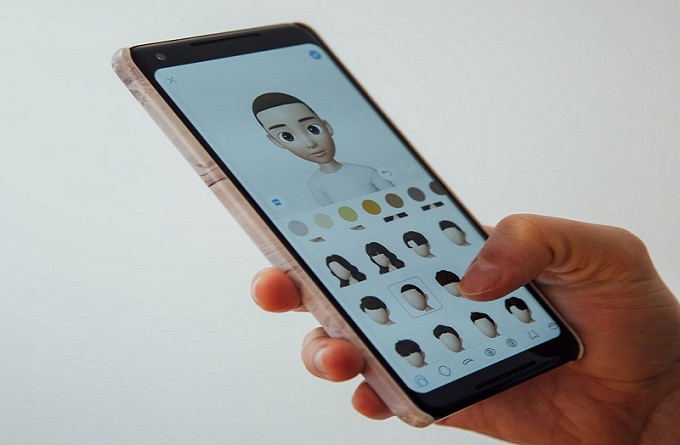When to Use (and Not Use) Emojis in the Workplace

Our tech-driven world has brought many changes and made it more complicated to navigate around new and emerging social norms. Development of smartphones and the internet, for example, have changed the way we communicate with each other, especially in our workplaces.
Modern mediums of communication like email and SMS texting bring workers closer together than ever before, but they've also called into question the proper etiquette for using these mediums in professional settings.
The use of emojis in electronic messages to communicate with one another in the workplace, for example, have been a bone of contention for some people with some arguing for and others against it.
According to a study published in Social Psychological and Personality Science, emojis make workers appear less competent. In fact, some senior managers (39% of them, to be precise) think it's unprofessional to include emojis in work communications, per another survey by OfficeTeam.
You may use emojis to express yourself in your day to day communications with friends and loved ones as they help to express your feelings colorfully through a visual image instead of with mere words. But should these emotive little faces and images be brought over into the workplace?
Should You Use Emojis in Work-Related Communication?
Those against using emojis in work-related communication tend to be older porofessionals (45 years and above), contending that emojis can get lost in translation since there is no universal agreement on what specific emojis represent.
"While a red-faced emoji might mean 'angry' to one person, another person might interpret it as 'embarrassed,'" says Marty Estelle Lundstrom, founder of Polished Professionals and a practicing attorney and certified etiquette consultant with Manners Pro.
However, millennials and Gen Z (who now make the majority of the laborforce in today's workplaces) see emojis as more acceptable when communicating with colleagues. This is not surprising considering that collaborative office tools like Slack are widespread in modern workplaces these days and these tools tend to promote casual work interactions.
"Emojis are appropriate for some business emails in the same way that jokes are OK in some job interviews," says Hilary, a PR manager. "You simply need to know your audience."
That said, employees of all ages may have different views on the use of emojis. So, the question of whether to use or not use emojis in work-related communications does not have a definite yes or no answer. It all depends and it’s best to use them at your discretion.
That ‘Face with Tears of Joy’ emoji is still the most popular emoji used today. It was, in fact, crowned the Oxford Dictionaries Word (yes, word) of the Year back in 2015, meaning people accross all ages are familiar with it.
However, just because people are familiar with an emoji, and they are either young or old, does not mean you should use the emoji. For example, emojis are inappropriate for a serious issue or complaint in the workplace.
And that is not the only case and situation where emojis are inappropriate.
When to Definitely Not Use Emojis at Work

If you are wondering when exactly you can and can't use emojis in professional correspondence and emails, we have some pointers for you.
Let’s start with when to definitely not use emojis.
I. When Conveying Serious Information
Emojis inherently present a risk of miscommunication. How you and your friends understand an emoji might not be apparent to your supervisor or a colleague who uses the same emoji for a different reason or to express a different sentiment/feeling.
A crying face is sometimes used by people to mean they've just seen something very funny. But to someone else, that could be easily misinterpreted to mean that you are upset.
It's easy to get confused when trying to interpret an emoji. As such, the number one thing you should avoid is using emojis to convey serious information, whether it be about your personal feelings or something you are complaining about. It's far too easy for the recepient at work to get the wrong idea.
II. In Strict Professional Settings and Contexts
Despite the popularity of emojis, they may still carry a negative stigma when it comes to perceptions of professionalism. Studies have found that the use of emojis in the workplace is often seen as less-than-professional.
In more than one case, workers were recorded as seeing those who use emojis at work as less competent. This might be the result of a certain generational divide, with older managers and workers reinforcing this view.
If you want to hold a strong reputation in your workplace, you probably should avoid using emojis in the majority of your work communications - unless your workplace is a startup with a vibrant, youthful work culture.
III. With Older Clients, Prospects You Haven't Met Personally
Don't use emojis in email conversations with older clients, customers and prospects that you haven't met personally or until you have identified their conversation style.
Given the conflicting views of each generation, this can help to avoid serious miscommunications.
Does all this mean that you shouldn't use emojis at work at all? Not at all. There are instances where you can (and probably should) use emojis in work communications.
When You Can (and Probably Should) Use Emojis at Work
You may not want to use emojis in your work emails for the above-mentioned reasons, but proper use of email emotes depends on the context.
Here are common instances where an emoji can actually add a lot to your work messages.
I. In Private Chats and Emails
Depending on who you are communicating with and what area or industry you work in, emojis might actually be a useful tool in private chats and email.
II. On Online Social Networks and Forums
With more and more people interacting with businesses online, brands and marketers may find emojis useful to communicate and connect with the customers in a manner they love and understand on social platforms and forums online. This can help to break the ice, stregthen relationships, and even boost conversions.
A report by Experian actually found that 56% of brands that used symbols such as hearts or stars in their email subject lines saw a higher open rate. Customers want to connect with a human, not a machine. This can be difficult to achieve if you are too formal in your communications.
The messages you send to fellow workers might also contain emojis on these platforms and in the right context. However, the proper use of the images might vary depending on the type of industry you work in. In the right context, a well-chosen emoji can bring similar levels of success.
III. In Less Formal Settings
It's all about reading the room when it comes to context. An email welcoming a new employee might benefit from a few emojis, while a reply to a boss' request for a report probably will not.
If the tone of your email chain has become increasingly casual, it might be okay to slip in an emoji. It may also be appropriate and helpful to use an emoji when trying to difuse a situation. It all depends on your proper reading of tone.
In conclusion
Emojis can be very useful, especially as people’s comfort level with emoticons and emojis in the workplace rises. But their relative newness can also present a challenge when it comes to communicating clearly in the workplace.
Always use prudent discretion to determine when you can use and avoid using emojis. That way you will enrich your emails and help to avoid miscommunications.
Remember, if you feel on the fence about sending an emoji or emoticon, the better choice is to not send it. The when and where an emoji is appropriate should be obvious.




















